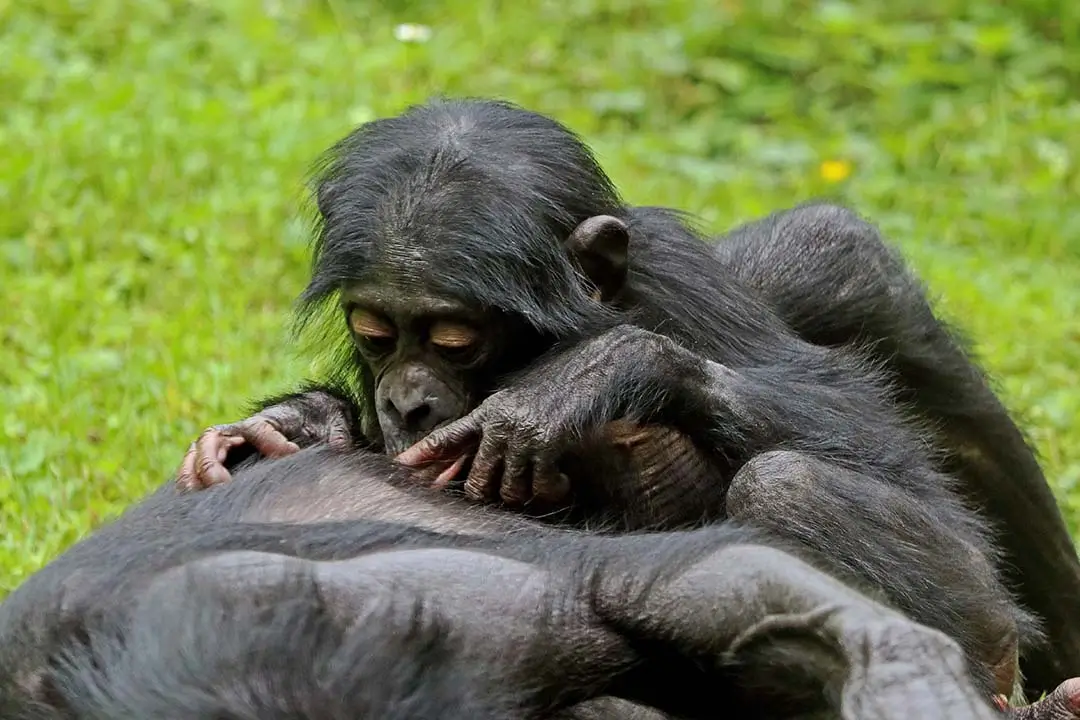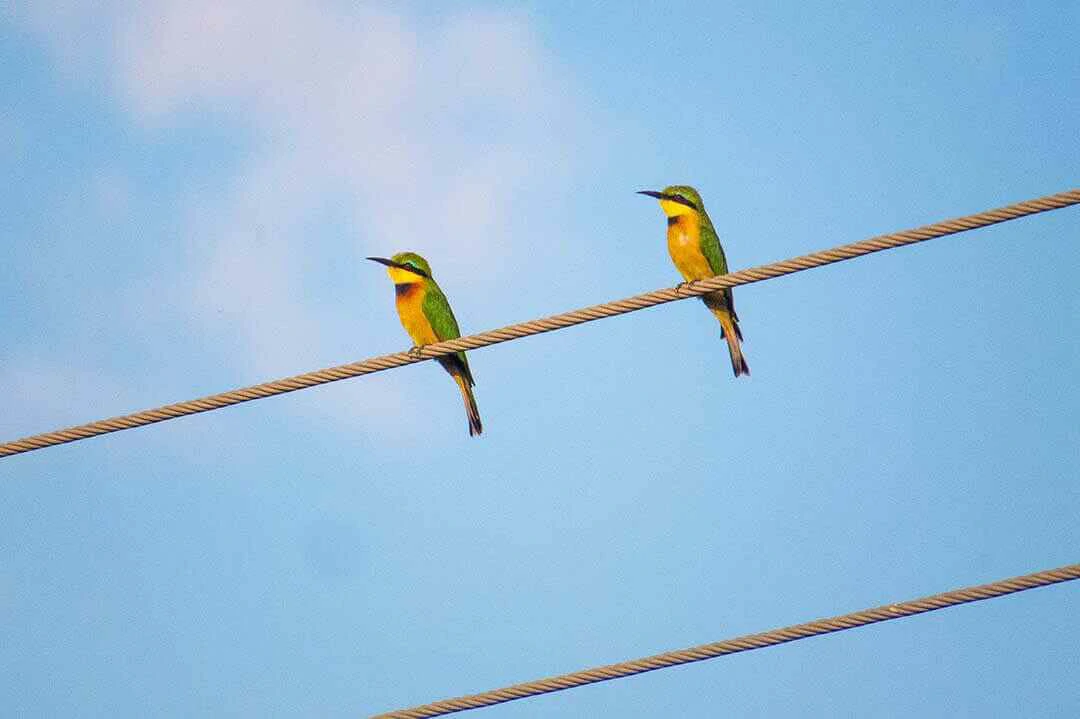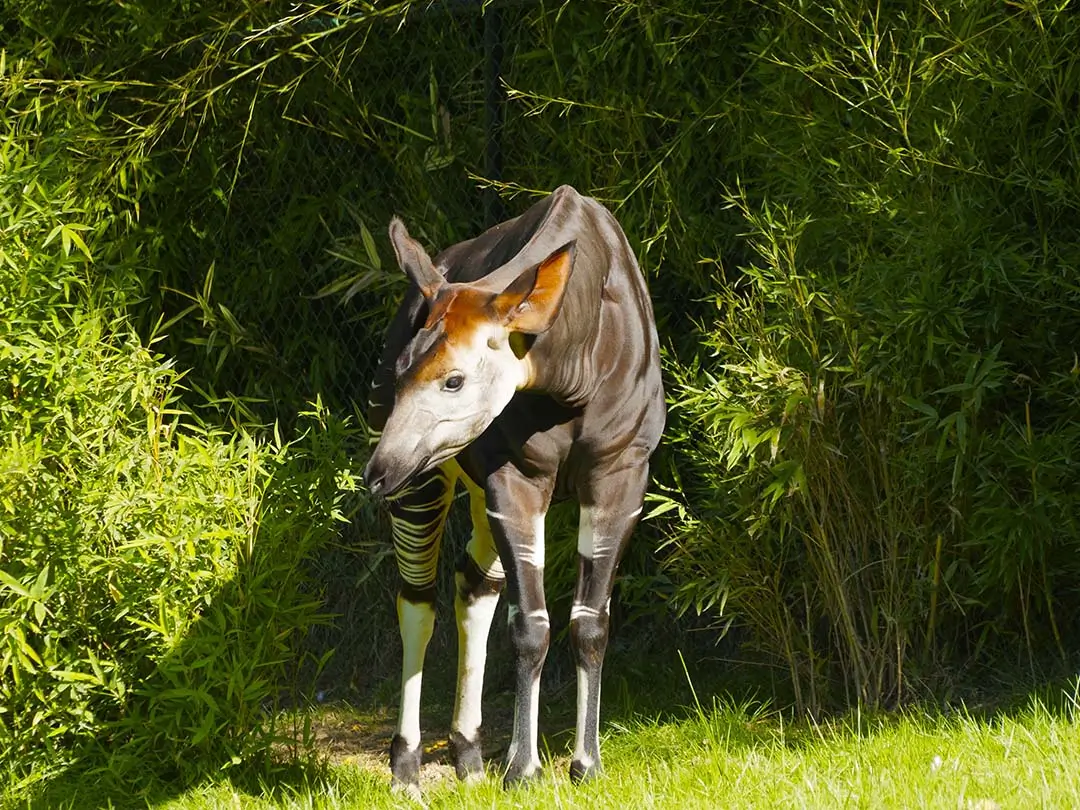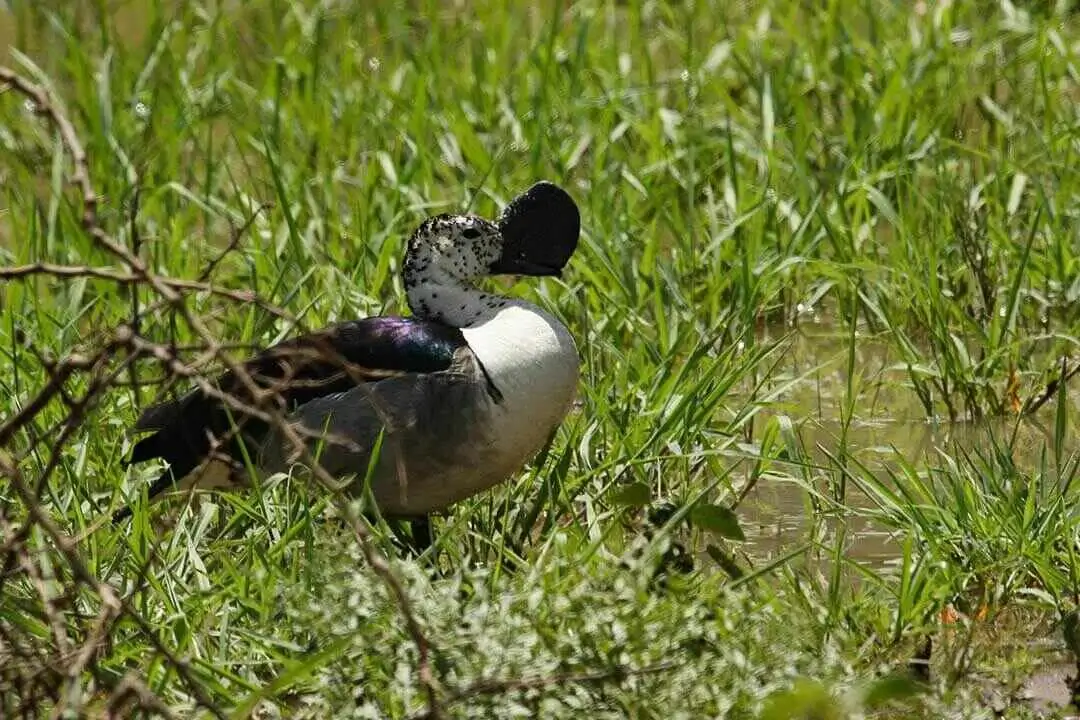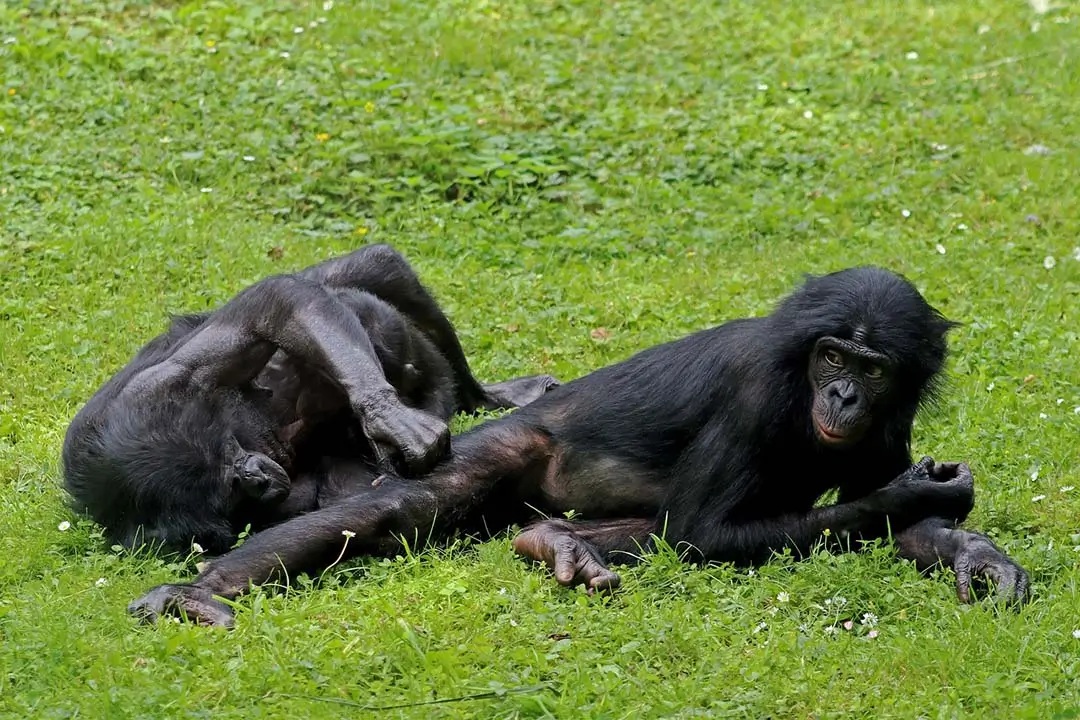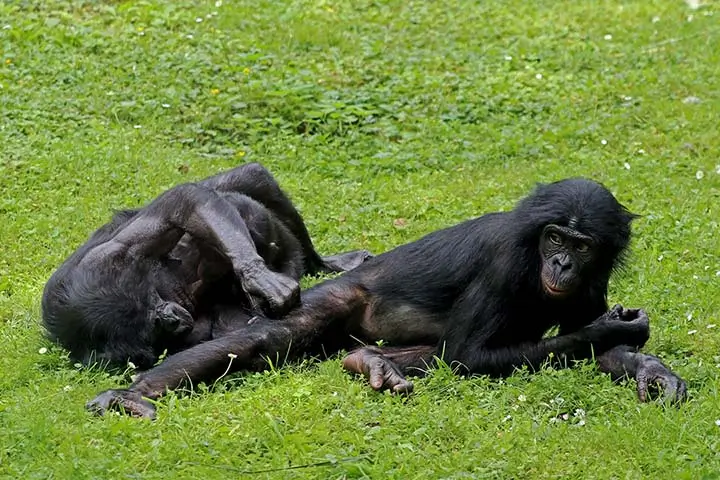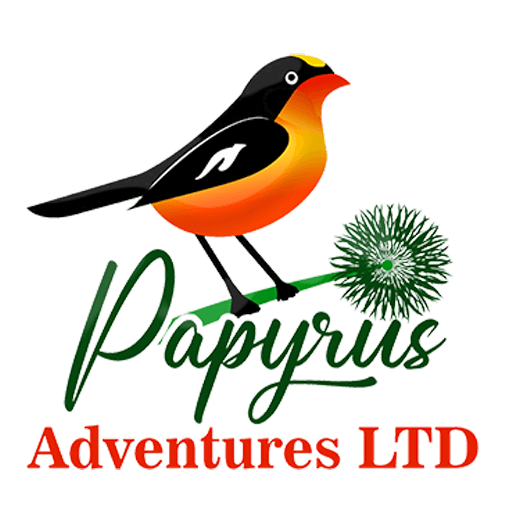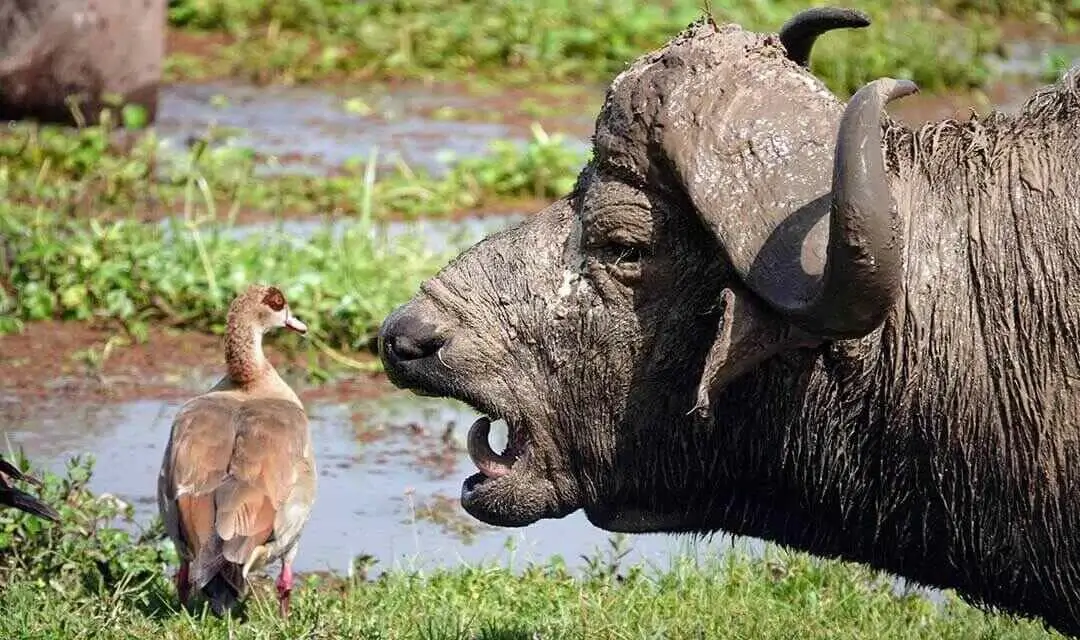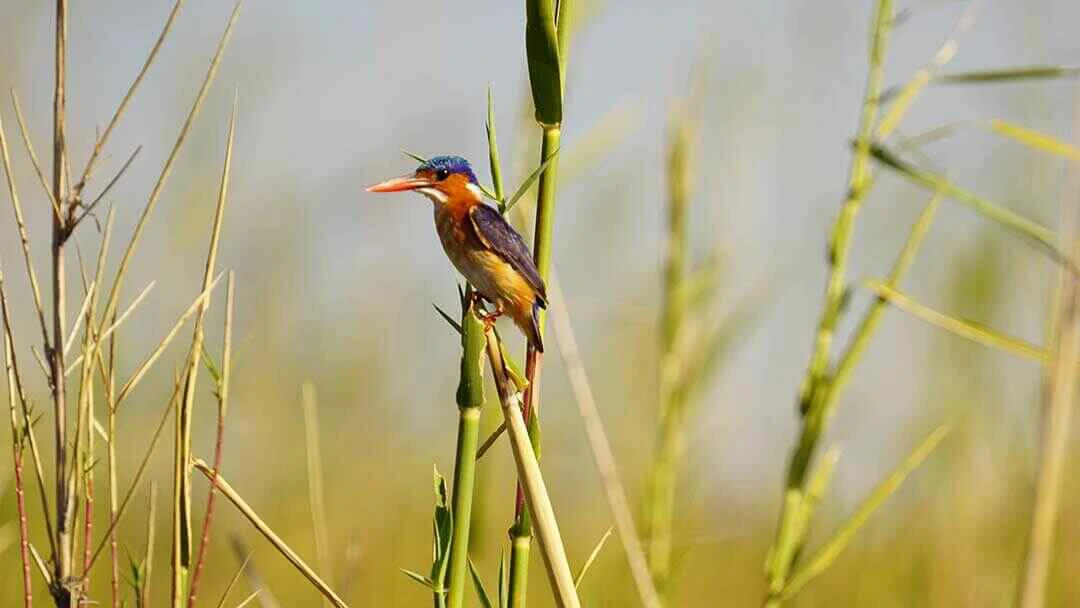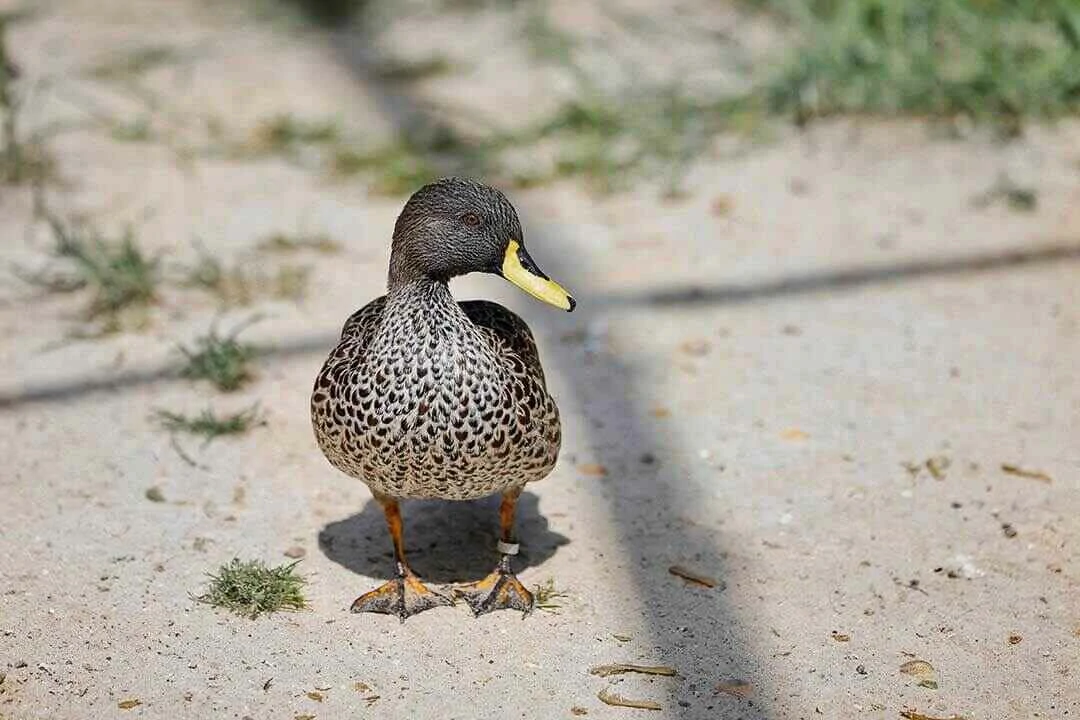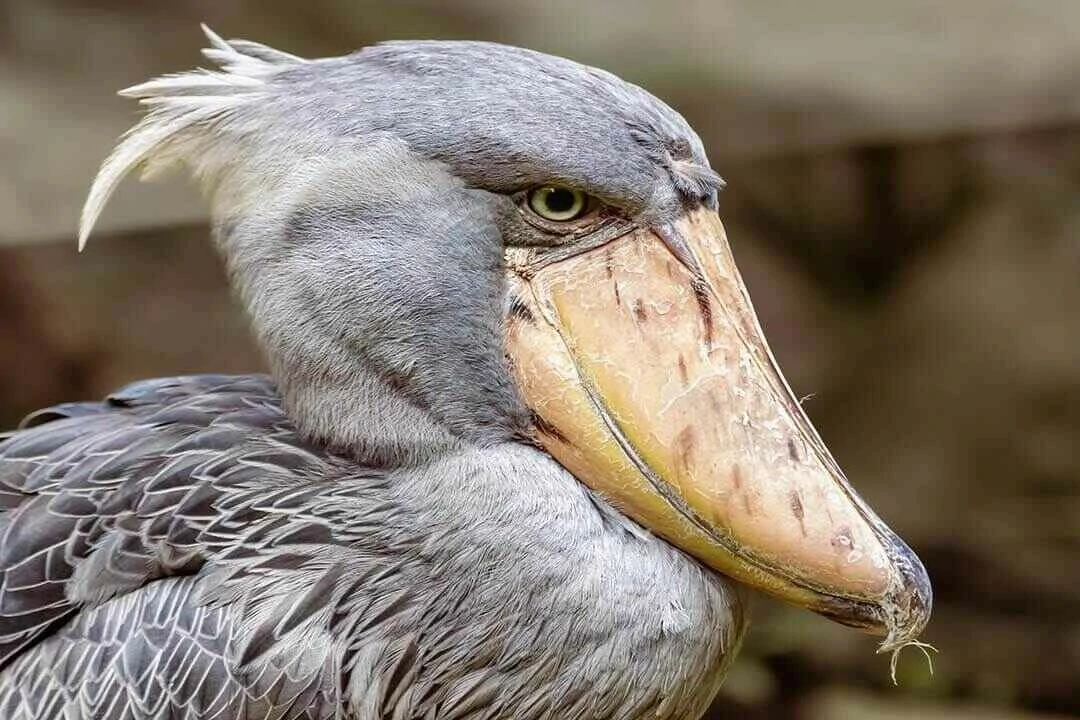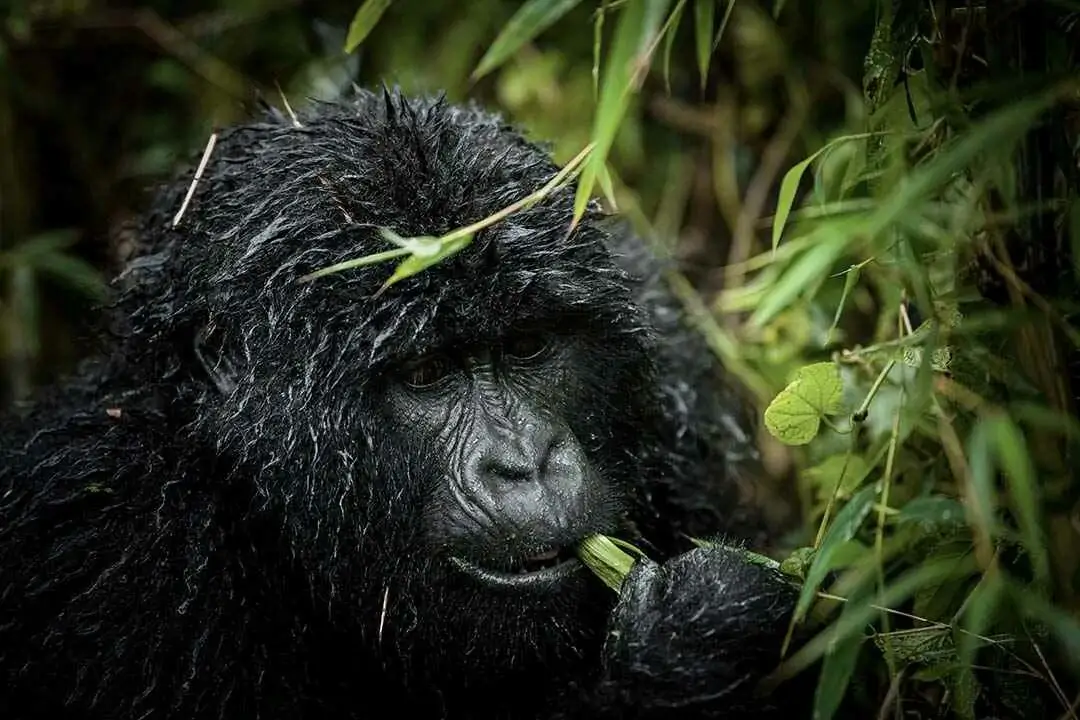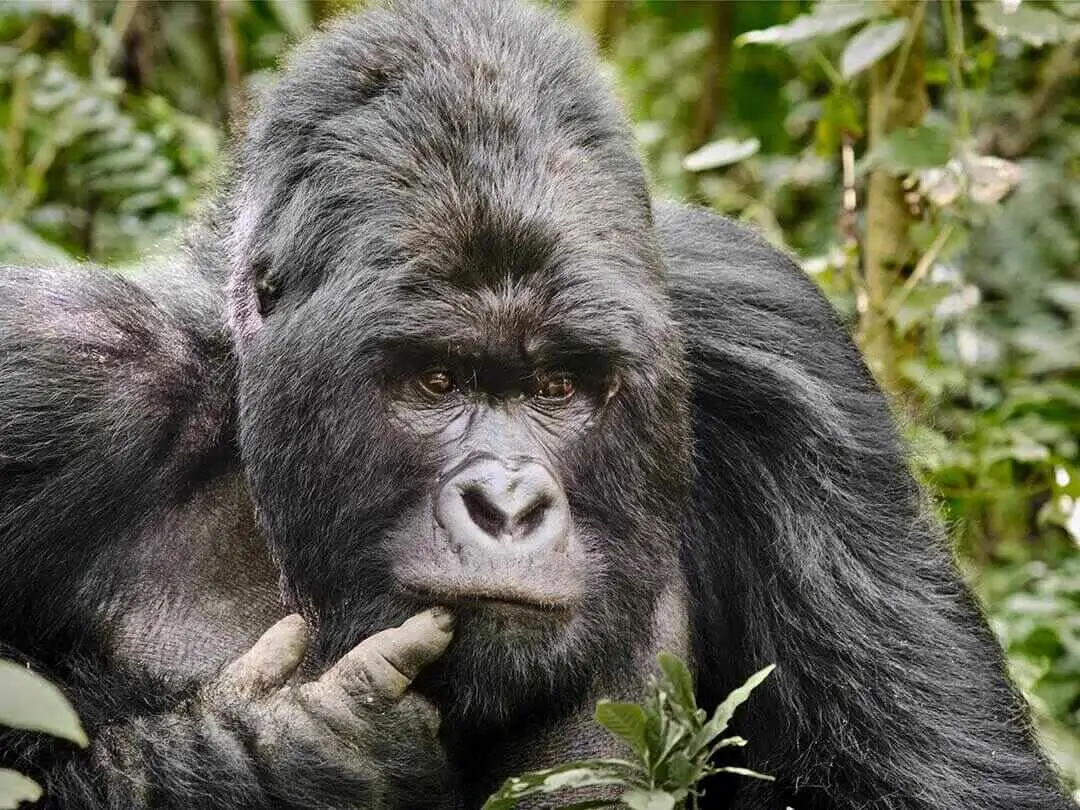Lomami National Park is located on the eastern edge of the Congo Basin in the Democratic Republic of the Congo. In July 2016, a new park was created in the Democratic Republic of the Congo, the Lomami National Park. Lomami National Park was established in July 2016 by Decree N 16/024 after several consultations with local communities to delimit the boundaries of the park.This park, unlike its predecessors, was designed with a large Buffer Zone in which local communities were allowed to carry out certain extractive activities to satisfy their own needs. The park covers 887,400 ha and stretches more than 150 km from north to south along the Lomami River. Traditionally using a variety of forest products, these communities accepted the usage restrictions in hopes of gaining development opportunities.
Lomami National Park is one of the few parks in the Democratic Republic of the Congo that has an officially declared buffer zone. Lomami is in a region still plagued by militias and the aftermath of the conflict in the eastern part of the Democratic Republic of the Congo. Administratively, the park is under the auspices of the National Conservation Authority (ICCN). The region is almost completely covered by dense tropical rainforest, which is home to, amongst other species, bonobos, forest elephants, giant pangolins, and hippos. Numerous endemic or rare species have been found in Lomami National Park, including Lesula monkeys, Dryas monkeys, Congo peacocks, and Okapi.
People benefit from the Park's reservoir function, because it safeguards species that can be legally hunted and collected in the Park's buffer zone. The local communities rely in many ways on the Park's natural resources and forest products for their own consumption as well as for commerce. Bush meat and fish are the prime sources of protein for the local population and are therefore a crucial part of their diet. In addition, bush meat is the region's main commercial product and the single most important source of cash income for about 3700 households. Natural resources, specifically game and fish have been declining in recent years indicating over consumption.
The core zone of the park is covered by savannah, swamp forests, and a lowland tropical forest, some of the latter being mono-dominant stands of Limbali. The climate is equatorial, with a mean annual rainfall of 1600 mm and mean monthly temperature of 23 to 26°C. The dry season (June to July) lasts less than 2 months. Hunting, gold mining through panning, or the collection of timber and NTFPs is not allowed in the park's core zone, but these activities except mining are allowed in the Buffer Zone. The main inhabitants of the region are farmers mostly Kusu, Kuti, Ngengele, Silwamba, and Tetela practicing small-scale slash-and-burn subsistence agriculture cassava, maize, and rice, hunting and fishing, and Mbote Pygmy hunter-gatherers. All villages located near the park Buffer Zone have no access to electricity, running water, or mobile phone networks. Roads are unpaved and most villages are only accessible by motorbike, some being inaccessible during most of the rainy season.
It is home to several nationally endemic species including Bonobo, Okapi, Congo peafowl, and a newly discovered primate species called Lesula, as well as the rare Dryas monkey known locally as Inoko. An important population of African forest elephant is still protected in the northern part of the park.
Vegetation
The vegetation type here is slow growing; old growth forest species that occur in low densities are particularly vulnerable to overharvesting. The Lomami buffer zone has rich, undisturbed old-growth mixed-species forest. There are nine tree species under international protection in the buffer zone. The most popular species are used sustainably: there are many of them and they are constantly multiplying.
Flora and Fauna
It has Nile monitor, Ituri forest chameleon, Gaboon Forest tree frog, black tree snake, large-eyed green treesnake, ornate African water snake, Jameson's mamba, black-necked spitting cobra, forest Cobra, two-lined night adder, gaboon viper, rhinoceros viper, African bush viper, African burrowing python, African rock paython, red-black stripped snake, Uganda house snake, eroded hinge back tortoise, bonobo, Lomami red colobus, Angola colobus, red-tailed monkey, blue monkey, wolf's monkey, dryad moneky, black mangabey, thoma's rope squirrel, boehm's bush squirrel, red-legged sun squirrel, forest giant squirrel, beecroft'sanomalure, long-eared anomalure, water chevrotain, sitatunga, African buffalo, fruit bat, benitoroundleaf bat, African civet, central African oyan, alexander's kusimanse, serval, side stripped jackal,, black-bellied pangolin.
Lomami has birds like Gabon coucal, red-chested cuckoo, owlet, African wood owl, Maned owl, blue-breasted bee-eater, blue-breasted king fisher, African finfoot, red-billed Dwarf hornbill, western crested guineafowl, black guineafowl, Senegal lapwing, Spot breasted Ibis, Cassin's Spine, Knob-billed duck, Black Goshawk, crowned Eagle, European Honey-Buzzard, Cassin's Flycatcher, Johanna's Sunbird, Black-headed paradise flycatcher, Pale-crowned cisticola, Croaking cisticola, black-billed turaco,
Activitives at this park
Wildlife viewing
The national park is home to an incredible diversity of African forests and endangered wildlife species that are at risk of extinction if immediate conservation measures are not taken. Activities in the area include poaching, forestry and farming. Wildlife species observed and recorded in Lomami National Park include Bonobos, Tsuapa red colobus, Lomami red colobus, Disse Angolan colobus, Northern black mangabey, Katanga red-tailed monkey, Yellow-tipped red-tailed monkey, De Brazza's monkey, Lomami river monkey, Congo -basin wolf monkey, Lomami hippopotamus monkey, LesulaDryas monkey and more.
Bird watching
Lomami national park is home to over 275 bird species both migratory and residential birds, bird watching is very fascinating and enjoyable as you encounter various beautifully colored birds such as grey heron, and Congo peafowl is seen. These include the Yellow-throated tinker bird, Black-billed Turaco, Cassin's flycatcher, Congo peafowl, grey parrots, Black Cuckoo, crested guineafowls, Hadada ibis, black-bellied bustard, Blue-breasted bee-eater, Eastern bearded greenbul, western Nicator, yellow whiskered greenbul, Velvet-mantled Drongo, white-breasted Nigrita, Black Sparrowhawk, little greenbul, Bates's nightjar, Crested guineafowls, Black-billed Turaco, Pale-crowned Cisticola, red-chested owlet, Black-headed herons, yellow rumpedtinkerbird, white-crested hornbills, Speckled tinkerbird, Johanna's sunbirds, Blue-breasted kingfisher, Blue swallow, Senegal lapwing, African Paradise flycatcher, spotted greenbul, Croaking Cisticola, chestnut-capped flycatcher, Cassin's Spinetail, Grey-throated tit flycatcher, Olive sunbirds and many others.
Boat rides
Boat tours offer exceptional opportunities to learn about the aquatic species and animals of Lomami National Park. Expect rare Nile lizards, birds, especially kingfishers, African ospreys and more. These boat trips usually culminate with a picnic lunch in the wilderness.
Cultural tours
Lomami National Park is surrounded by several villages that are home to 7 different ethnic groups such as Mbole and Mituku. Visitors are given the opportunity to learn about the ancient hunting techniques of the people, listen to stories from the jungle, dance traditional dances and even buy locally made handicrafts and even taste local food.
Fishing
Fishing excursions within Lomami National Park are undertaken within the Lomani River as well as Lualaba River Basin where a superfluity of fish species including Nile Tilapia and Catfish among others. On the other hand, visitors can join the locals to fish within the dug-out ponds close to the village. With over 129 species of fish that visitors to Salonga National Park can encounter, it is therefore possible for anglers to embark on fishing adventures. However, intended participants are advised to always bring their own fishing gear along with other safari essentials. Given that catfish species are the most prevalent, catfish fishing is definitely a popular adventure among visitors to the Congo River Basin. These trips are conducted year-round using traditional wooden boats and live bait.
Lomami River
The Lomami River is one of the beautiful features with which this country is blessed and is considered the main source of the Congo River in the Democratic Republic of the Congo. The Lomami River is about 1,280 kilometers (800 miles) long and flows north and west and parallel to the upper Congo before joining the Congo River at Isangi, about 113 kilometers (70 miles) west of Kisangani. This river originates in the Katanga highlands of southern DRC near Kamina and the Congo-Zambezi divide, but also flows north through several districts such as Opala, Tshofa, Lubao, Irema, Bolaiti and Kombe.
The Lomami River lends its name to several plant and animal species, including primates such as Cercopithecuslomamiensis (Lesula) and the flowering plant known as Pavettalomamiensis. Also the fact that Lomami National Park is located on the basin of this river is home to several species of mammals such as Dryas monkeys, bonobo, African forest elephants, the rare and newly discovered Tshuapa red colobus monkey, Lomami river wolf monkeys, Katanga red-tailed monkeys, Sclaters Angolan colobus monkeys , Congo Basin wolf monkeys, yellow-nosed red-tailed monkeys, northern black mangabeys, de Brazzas monkeys, northern black mangabeys and Lomami blue monkeys, as well as birds such as the Congo peacock and gray parrots can be sighted.
Notably, the bonobos are common on the eastern banks of the Lomami River and, surprisingly, they are said to be genetically distinct from the other bonobo populations in the country, which is why the existence of the Lomami River is considered a geographic barrier. Also, the okapi, a rainforest giraffe and one of the country's endemic species, is found specifically on the western banks of the river.
Guided Forest Walks
Guided forest walks through the dense tropical rainforest of Salonga National Park are a fascinating way to experience the extraordinary wildlife in the sanctuary and to learn about the various medicinal plants that have been used by local people for years. In addition to species of birds, expect various snakes, frogs, unique species of trees and animals on the ground, as well as a group of monkeys jumping through the treetops. While Salonga National Park is home to more than 50 species of mammals, 223 species of birds, and various reptiles, visitors are not guaranteed to see specific attractions. All you need is a good camera, binoculars and the necessary hiking gear to have the best experience.
Cultural Tours
Simply having the golden opportunity to explore local Iyalima culture is undoubtedly a fulfilling and enlightening experience. For this adventure, visitors are allowed to interact and learn how these people live their lives around the forest and Congo River basin. Travelers will be amazed at how these people have maintained their original beliefs and customs through generations, without the impact of modernity. You'll have the chance to see traditional dance performances, shop for arts and crafts, and even taste the local cuisine.
Swimming in the Congo
Since it holds the world record for the deepest river, you wouldn't imagine that it's possible to swim in the Congo. This bath is for brave tourists looking to cool off from the Salonga heat.
Kayaking
River Congo offers kayaking where visitors have the opportunity to paddle at leisure in the most remote parts of the tropical rainforest in the presence of experienced local guides, enjoying views of animals, birds and trees of particular interest. These kayak excursions usually start in the morning, a perfect time for spotting numerous bird species. The guides hired from the surrounding community provide support for both novice and experienced paddlers, with additional knowledge of the Congo River, its dominant current and the tropical rainforest. Expect 1-2 hours of kayaking.
Lomami National Park is located in two provinces: Tshopo and Maniema. It is located south of Kisangani, the provincial capital of Tshopo, and northwest of Kindu, the provincial capital of Maniema. Lomamijoki forms the western border of the southern border of the park and flows through the northern central part of the park. As a biogeographic barrier, this river influenced the development of fauna in the region. Two other rivers, the Tshuapa and Lualaba, define the general east-west boundaries of the TL2 landscape.
Location
Pene-Molalo, Congo - Kinshasa
Size
8879 Square Kilometers
Do You have any Questions?
Our Experts are ready to provide answers
Explore Out Top Tour Ideas
Travel With Us
When considering your next adventure, Papyrus Adventures stands out as the ideal travel companion, offering a comprehensive package of benefits that ensure an unparalleled experience.
Best Price Guaranteed
With our "Best Price Guaranteed" policy, you can rest assured that you are getting the most value for your investment.
Professional Safari Guides
Our commitment to excellence extends to our team of "Professional Safari Guides," who possess extensive knowledge and expertise, ensuring a journey filled with insightful and unforgettable moments.
Locally Owned Company
Papyrus Adventures is deeply rooted in the destinations we explore, allowing us to provide authentic and immersive experiences that showcase the rich cultures and landscapes of each location.
24-7 Customer Support
our "24-7 Customer Support" ensures that your needs are met around the clock, providing peace of mind and a safety net for any unforeseen circumstances.
Frequently Asked Questions About Lomami National Park
The best time to travel to Lomami National Park is during the long dry season from May to September, with July being the driest month by far, followed by June. The temperature also drops very slightly during these months. There is a shorter dry season in January and February.
As the park is a new national park it does not have improved accommodation options and we strongly recommend wilderness camping in the park which means safaris are arranged based on the camping accommodation option. For more information on travel to Lomami National Park and Democratic Republic of Congo travel restrictions please contact us today.Lorem ipsum dolor sit amet consectetur adipisicing elit. Voluptates accusantium cum error consequuntur pariatur, nihil minima est ex doloremque dolorem doloribus, iure voluptatem ipsum consequatur magni. Atque id soluta ea!
This spectacular national park can be explored year-round, although the dry season -- June through August and December through February -- draws the most visitors, as the park roads and forest floor are drier and more accessible. The wet months of March to May and October to early December are avoided for a number of reasons, including muddy, slippery and impassable roads that only four-wheel drive vehicles need to maneuver.
By air, visitors need several days to reach the city of Kindu, located on the banks of the Lualaba River, the largest tributary of the Congo, and approximately 1,200 river miles from where the Congo flows into the Atlantic. From Kindu, it takes a full day by motor vehicle and pirogue (a canoe traditionally made from a single tree trunk) to reach ChombeKilima, a village in the park's buffer zone. You will trek from Chombe Kilima. The adventure gets better when you cross open savannahs with orchids and other botanical wonders and pass through primary rainforest under leaf nests built daily by bonobos, one of man's closest relatives and nicknamed the "love not war" monkey.
